The bottom left capacitor and \$C_O\$ are coupling capacitors.
The top left capacitor acts to increase negative feedback to 100% at DC.
The capacitor values should be large enough such that there is negligible effect at the low end of the frequency band of interest.
For example, for an audio amplifier, you want to amplify frequencies as low as 20Hz. Thus, you want:
\$\dfrac{1}{2 \pi R_LC_O} << 20Hz \$
The input coupling capacitor interacts with the source resistance \$R_{in}\$. It can be shown that:
\$\dfrac{1}{2 \pi (R_{in} + 50k\Omega)C_{i(in)}} << 20Hz\$
For the feedback capacitor, it can be shown that:
\$\dfrac{1}{2 \pi R_1C_{i(fb)}} << 20Hz\$
